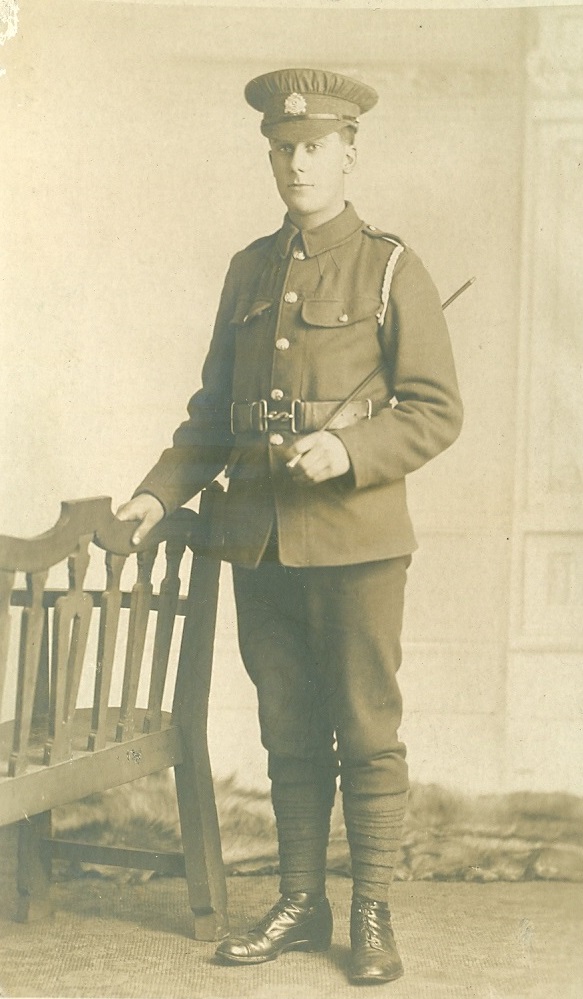Pte
Wilmot Leonard Lorton
Informatie over geboorte
|
Geboortejaar: 1897 |
|
Geboorteplaats: Hanslope, Buckinghamshire, Engeland, Verenigd Koninkrijk |
Algemene Informatie
|
Beroep: Tuinman |
Informatie legerdienst
|
Land: Engeland, Verenigd Koninkrijk |
|
Strijdmacht: British Expeditionary Force |
|
Rang: Private |
|
Service nummer: 23605 |
|
Dienstneming plaats: Ampthill, Bedfordshire, Engeland, Verenigd Koninkrijk |
|
Eenheden: — Bedfordshire Regiment, 4th Bn. (Laatst gekende eenheid) |
Informatie over overlijden
|
Datum van overlijden: 30/10/1917 |
|
Plaats van overlijden: Bray Farm - Haus Kirchner, België |
|
Doodsoorzaak: Killed in action (K.I.A.) |
|
Leeftijd: 20 |
Gedenkplaats
|
Tyne Cot Memorial Paneel: 49 |
Onderscheidingen en medailles 2
|
British War Medal Medaille |
|
Victory Medal Medaille |
Points of interest 2
| #1 | Dienstneming plaats | ||
| #2 | Plaats van overlijden (bij benadering) |
Mijn verhaal
Private Wilmot Leonard Lorton served in the Bedfordshire Regiment 4th Battalion, part of the 190th Brigade, of the 63rd (Royal Naval) Division. The Division participated in the Third Battle of Ypres in one of the final operations of the offensive. On the 30th of October 1917 the 63rd (Royal Naval) Division attacked with one Brigade.
This Brigade, the 190th Brigade, advanced with the 4th Bedfordshires in the centre of the divisional front, the 7th Royal Fusiliers on the left and the Artists Rifles on the right. The Canadian Corps was on the right of the Artists Rifles. The attack commenced at 5.50 a.m., zero hour. The Canadian attack in the direction of Passchendaele was successful, reaching the outskirts of the village. However the attack of the 63rd (Royal Naval) Division encountered more difficulties. The condition of the battlefield was terrible, especially around the Paddebeek stream. The terrain was one boggy mud plain, which slowed down the advance. The advancing troops were often up to their knees in mud. Making them easy targets for the machine gun and rifle fire of the men of the German 111th Infanterie-Division on the opposing side. While the men of the 63rd Division were struggling in the mud, the German artillery dropped a counter-barrage 100 yards behind the British barrage, causing severe casualties.
The boggy terrain combined with relentless German suppressing fire resulted in a meagre British advance. That night the 63rd Division held a line at Source Trench-Varlet Farm-Bray Farm-Berks Houses, only 150-200 yards further from their starting point. The Battalion made only some ground, while the casualties were numerous. The 4th Bedfordshires lost two officers in the attack. Seven officers were wounded. Fifty-two men of the other ranks were killed, 150 men were wounded and 23 men went missing.
Private Lorton was killed in action on the 30th of October 1917 during the attack near Bray Farm. He has no known grave and is remembered at Tyne Cot Memorial.
This Brigade, the 190th Brigade, advanced with the 4th Bedfordshires in the centre of the divisional front, the 7th Royal Fusiliers on the left and the Artists Rifles on the right. The Canadian Corps was on the right of the Artists Rifles. The attack commenced at 5.50 a.m., zero hour. The Canadian attack in the direction of Passchendaele was successful, reaching the outskirts of the village. However the attack of the 63rd (Royal Naval) Division encountered more difficulties. The condition of the battlefield was terrible, especially around the Paddebeek stream. The terrain was one boggy mud plain, which slowed down the advance. The advancing troops were often up to their knees in mud. Making them easy targets for the machine gun and rifle fire of the men of the German 111th Infanterie-Division on the opposing side. While the men of the 63rd Division were struggling in the mud, the German artillery dropped a counter-barrage 100 yards behind the British barrage, causing severe casualties.
The boggy terrain combined with relentless German suppressing fire resulted in a meagre British advance. That night the 63rd Division held a line at Source Trench-Varlet Farm-Bray Farm-Berks Houses, only 150-200 yards further from their starting point. The Battalion made only some ground, while the casualties were numerous. The 4th Bedfordshires lost two officers in the attack. Seven officers were wounded. Fifty-two men of the other ranks were killed, 150 men were wounded and 23 men went missing.
Private Lorton was killed in action on the 30th of October 1917 during the attack near Bray Farm. He has no known grave and is remembered at Tyne Cot Memorial.
Bronnen 3
|
4 Battalion Bedforshire Regiment. (The National Archives, KEW (TNA), WO 95/3118/2). https://discovery.nationalarchives.gov.uk/details/r/C14303 Verdere verwijzing |
|
McCarthy C., Passchendaele. The Day-by-Day Account, (London, Uniform, 2018), pg. 154-155. Gebruikte bronnen |
|
Sir Maurice F., The 16th Foot: A History of The Bedfordshire and Hertfordshire Regiment, (London, Constable & Company LTD, 1931), pg. 187-188. Gebruikte bronnen |
Meer informatie 3
|
Commonwealth War Graves Commission Database https://www.cwgc.org/find-records/find-war-dead/casualty-details/833186 |
|
Namenlijst (In Flanders Fields Museum) https://namenlijst.org/publicsearch/#/person/_id=8fbff947-2c88-4461-b1ce-3d46855703c4 |
|
Lives of the First World War (Imperial War Museum) https://livesofthefirstworldwar.iwm.org.uk/lifestory/2703077 |
